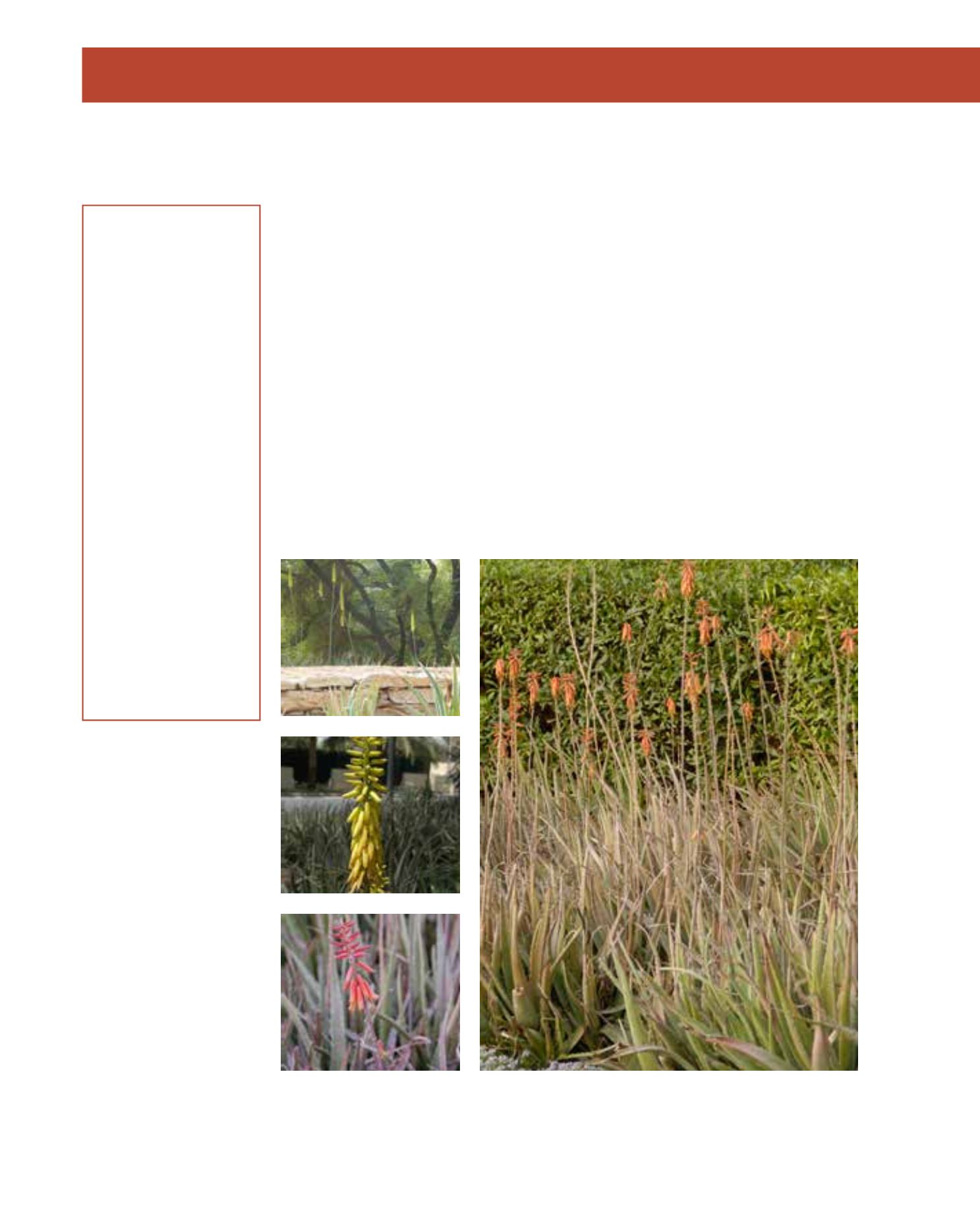

GENERAL
Origin
:
Mediterranean,
sub-tropical
Vigour
:
slow-growing
Humidity
:
very arid, semi-
arid
Propagation :
sowing and
pricking out,
cuttings, division
Maintenance :
low
CONDITIONS
Urban climate :
resistant
Dessication :
resistant
Stagnant water :
vulnerable
Irrigation
:
low
Salinity/ppm :
high (5000 ppm)
Hardiness
:
+3°C
SHAPE
Type
:
cacti, succulents
Height
:
0.6 m-0.9 m
Spread
:
0.8 m-1.4 m
Foliage
:
evergreen
FLOWER
Colour
:
yellow, orange
Size
:
70 cm - 90 cm
Period
:
March - May
FRUIT
Type of fruit :
capsule
Fruit size
:
3 cm
Since ancient times, the medicinal Aloe has been planted for its numerous healing qualities.
Its exact origin is said to be northern Africa. It is often found on farms and in gardens in the
Arriyadh area. Compounds of medicinal Aloe ease the healing of wounds. Upright, succulent
leaves form dense rosettes of a bluish-green hue. To cope with drought, they even turn dull red.
The small serrations along the margins do not present a hazard. Leaves form basal rosettes of
about 60 cm height. In spring, yellow flowers grow like torches increasing the plant’s height to
some 90 cm. These are followed by capsules later on. Pollination is performed by bees and birds;
self-pollination is not possible. Heat and sun are no problem, and clumps become wider, even
if neglected. For a handsome appearance, they should be groomed occasionally by removing
dead leaves and floral stalks. The Aloe can easily be grown in well-drained containers. Potting
soil should consist mainly of coarse sand, alkaline garden soil and some humus. Fertilisation is
best provided by slow-releasing granules that are added to the soil in early spring and again in
summer. Dividing Aloe clumps brings many offsets – the easy and quick way to achieve new
plants. Seeds germinate easily too, but obviously take more time to show results. The seeds are
ripe when the capsule is dry. It splits open to release winged seeds that are dispersed by wind.
Seedlings demand good ventilation and are quickly killed by overwatering. Pests are rare, but
scale or mealybugs sometimes infest it.
49
Aloe vera,
Aloaceae
Medicinal Aloe,
True Aloe, sabbar saqal
















